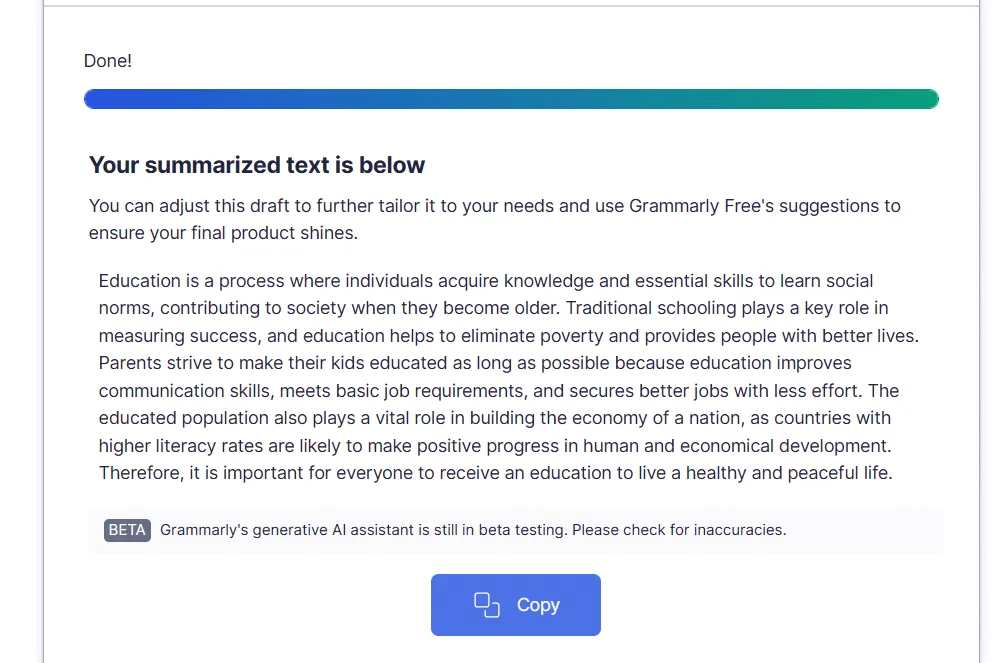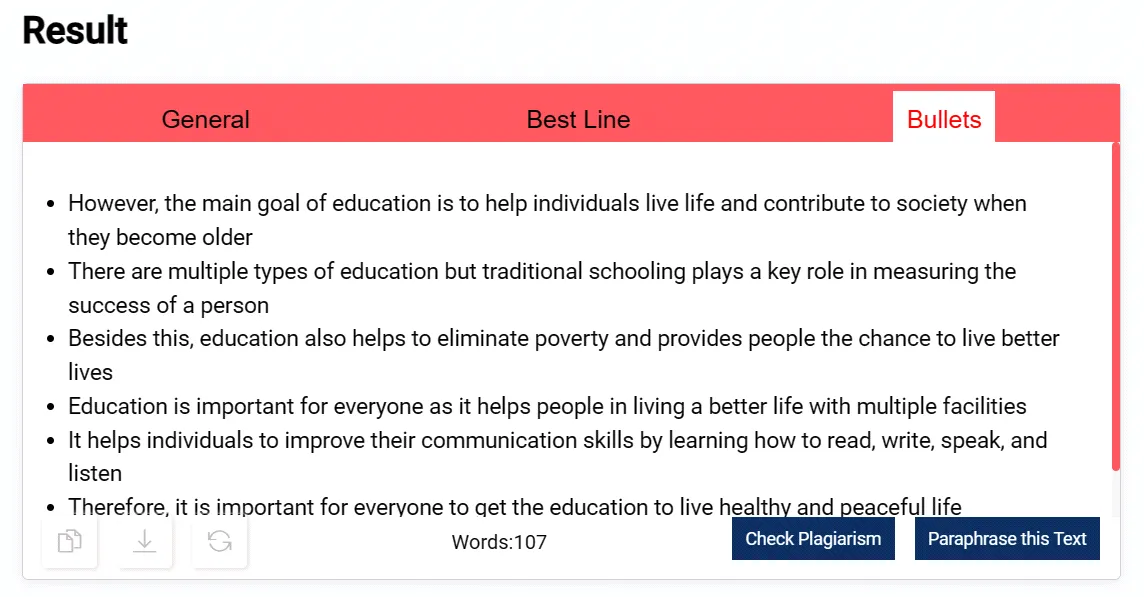Comparison Between 5 Best Top Ranking AI Summarizers

The use of AI tools in content optimization is at an all-time high. The reason is that they are incredibly convenient and accurate. Today, we are going to be checking out one type of AI tool: text summarizers.
We will be looking at and comparing five different summarizers to help you find the best tool for your needs. Now, let's get started.
Comparison of 5 Best AI Summarizers
These five tools are not some run-of-the-mill summarizers. They are the best at their job and rank in the top five of the Google SERPs. However, just like everything else in life, they are also different from each other. Through this comparison, you will be able to find the best tool to help you in your specific situation be that summarizing an article, research paper, or just a blog post.
Summarizer.org
The first tool on our list is called Summarizer.org. The “.org” is important to add because there are many tools that are called “Summarizer” but have different URLs such as “.net”, “.io” etc., etc.
This freemium summarizer has two modes, a standard mode where you can set the length of the summary, and an “AI” mode where the length is calculated automatically. The AI mode is paid.
The free mode is no slouch though. It can create an extractive summary that is very accurate and can be formatted to appear as a list as well. But enough about its features. Let's take a look at it working. The image below shows us how the tool summarizes a sample passage.

We set the length to 40% of the original text and we got a pretty good extractive summary. The text in question details the importance of education and how it helps to solve many problems. We will be using the same text for testing the rest of the tools as well.
QuillBot Summarizer
The second tool on our list is an abstractive summarizer called QuillBot. QuillBot summarizer is free to use. It also provides the option to change the length of the summary but unlike Summarizer.org, it only provides four distinct options rather than give you a slider.
It also provides the option to format the summary as a list instead of a paragraph. One thing that it provides extra is the inclusion of keywords in the summary. The tool identifies some keywords, and you can choose which ones are important. Then it changes the summary accordingly.
In the image below you can see the QuillBot summarizer in action.

The summary is accurate, worded nicely, and quite readable. It is abstractive, meaning it is using different words than the source material.
SEMrush Summarizer
SEMrush summarizer is either using the same API as the QuillBot Summarizer, or it is using the QuillBot Summarizer's API itself. That's why it provides exactly the same results as QuillBot i.e., an abstractive summary, whose length can be altered and can be formatted into bullet points.
It is, however, missing the keyword-focusing feature. So, it really comes down to which tools ecosystem you are more comfortable with. Anyway, here is the image that shows the working of the SEMrush summarizer.

As you can see the summary is exactly the same as QuillBot. Each and every word is the same. Now, let us move on to the other tools.
Grammarly Summarizer
The AI summarizer by Grammarly is quite good. It works a bit differently than the other tools but that might change in the future as it is still in the “Beta” stage.
With this tool, you can create abstractive summaries of any content in the tone of your choice. Yes, you read that right, the tone of your choice. When you use this tool, you input your content into a text box, and then when you press “Submit” you get to another page where you can write down which kind of tone you want.
For our example, we chose “Formal”, but you can even use casual, or convincing tones if you like. Here is the final result we got from using Grammarly Summarizer.

As you can see, the summary is quite good and is written in a formal tone. You can copy this summary and use it where you need.
Summarizingtool.net
The last tool on our list is called Summarizingtool.net. This is a free extractive summarizer and offers many of the same features as other tools on this list. You can choose the length of the summary from short, medium, and long lengths. You can also make the summary appear as just one best line, a paragraph, or a list of points.
There aren't any different modes, so you are stuck with just extractive summaries, but they are quite good, so you shouldn't have problems. Here is an image that shows the results of this summarizer.

You can download or copy the results to use them. one good thing about Summarzingtool.net is that it lets you check the summary for plagiarism or paraphrase it if you like without having to open another webpage.
Comparison of All Five Tools
Now, we are going to show you the differences between all the tools to help you decide which one is the best for you.
| Summarizer | QuillBot | SEMrush | Grammarly | Summarizing tool | |
|---|---|---|---|---|---|
| Pricing model | Freemium | Freemium | Freemium | Free | Free |
| Multiple modes | Yes | No | No | No | No |
| Keywords | No | Yes | Yes | Yes | Yes |
| Output Formatting | Yes | Yes | Yes | No | Yes |
| Integrated Tools | No | Yes | No | No | Yes |
| Extractive Summary | Yes | No | No | No | Yes |
| Abstractive Summary | Yes | Yes | Yes | Yes | No |
| Accurate | Yes | Yes | Yes | Yes | Yes |
So, this table shows the differences between the five tools. As you can see there are individual differences between the tools. Some are extractive summarizers, and some are abstractive, (although one is both). Some of them have integrations with other tools and some don't. So, it all boils down to what your preferences are.
Conclusion
This concludes our comparison of the top five summarizers. We saw the various features of each tool and compared their performance against each other. We saw that they are all competitive tools, and you should really choose the ones you want to use based on your personal preferences.